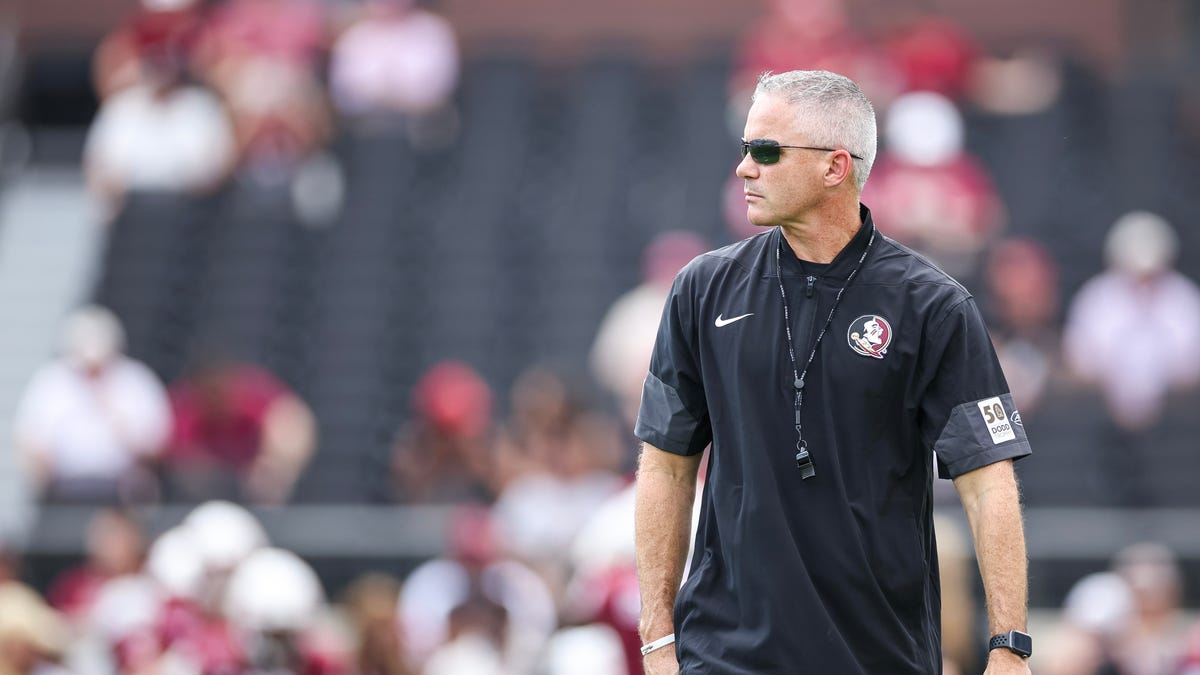Florida
Hero's welcome: Remains of Florida man killed in WWII returned home

Florida man died in WWII returned to home
A hero’s welcome home was held for a fallen U.S. Airman, 79 years after his death.
ORLANDO, Fla. – A hero’s welcome home was held for a fallen U.S. Airman, 79 years after his death.
The remains of Staff Sergeant Franklin Hall were flown back to Central Florida from Europe. Hall was just 21 years old when his plane was shot down over France in 1944.
Hall’s nephew worked to keep his memory alive. He provided DNA a few years ago to see if it matched remains found in France, and when those remains were identified as Hall’s, the Army worked to get him back home.
“I’ve never known him. My mother always talked about him. At this point, I feel like I know him,” said Jeff Hester. “Sometimes I get choked up talking about him because I really don’t know him, but I do.”
Franklin Hall will have a funeral in Leesburg, buried right next to his grandparents with full military honors. The family plans to hold it on the same day and time when his plane was shot down nearly 80 years ago.

Florida
Jesuit’s Will Griffin becomes 10th Florida high school QB to throw for 10K yards

TAMPA – Jesuit High School senior quarterback Will Griffin always idolized Florida Gator football legend Tim Tebow.
“I look up to him,” Griffin said.
However, it’s Tebow that is now looking up at Griffin, at least when it comes to the high school football record books.
What they’re saying:
“He’s definitely the once in a career type of player,” Jesuit head coach Matt Thompson said. “You don’t really get it that much. Not as a quarterback. I have not had a quarterback be as special as Will.”

In the first game of the 2025 season, Griffin surpassed the 10,000 passing yards career milestone. He is just the 10th player in high school football history in the sunshine state to ever join that club, according to MaxPreps. Tebow finished his career at Nease High School with 9,765 passing yards.
“10,000 was amazing,” Griffin said. “It is really hard to do that. I’ve got to remind myself that I go out here and play for the team. I am not playing for myself or the stats that follows. If you can have a good team around you and a great defense to get you the ball, a great offense that can score, the stats will naturally come.”
The backstory:
It certainly helps he was able to play varsity football as a seventh and eighth grader under Tampa Bay Buccaneers legend Mike Alstott at Northside Christian. Griffin makes it clear; however, he does not deserve all of the credit for hitting this mark.
“I wouldn’t be here if it wasn’t for the offensive line,” Griffin said. “If it wasn’t for the receivers catching my passes. If it wasn’t for the running backs running touchdowns to open up the pass. A lot of things go into it.”
READ: State Basketball Championships moving to Jacksonville after decades in Lakeland
A lot of things go into his success, but Jesuit head football coach Matt Thompson says Griffin has a lot of the traits to be successful.

“He has all of the measurables,” Thompson said. “[He has] the size, the speed, the strength and the arm strength as a quarterback. His football IQ is outstanding. He understands the game. He understands the offense. He understands the defense. He’s a total package.”
The University of Florida was impressed with those abilities and offered him a scholarship. For the kid who grew up watching the Gators on fall Saturdays, it’s a dream come true.
Going to Gainesville
“It’s just home,” Griffin said. “It felt like the right place for me to be. Very excited. I want to get there. I want to help out. I want to contribute. I want to play really badly.”
However, at this moment, Griffin just wants to soak in his last few months as a high school football player.

“I am trying to enjoy it as much as I can because I know it’s going to end soon,” Griffin said. “I want to make sure I take in every moment.”
That’s because Griffin wants to be remembered not for his stats but for who he is as a person.
“I want people to remember me more as a leader rather than going to Florida,” Griffin said. “I want it to be more like, ‘He was a leader. He gave everything to the team. He never quit. He never gave up.’”
Griffin will enroll early at Florida. He was the first commit for Billy Napier in the 2026 recruiting class.
The Source: The information in this story was gathered by FOX 13’s Mark Skol, Jr.
Florida
Thousands of Northeast Florida students, community members pour out support for Charlie Kirk at vigil

ST. JOHNS COUNTY, Fla. – Students and community members from across Northeast Florida gathered Sunday evening at Veterans Park to honor conservative activist Charlie Kirk, who was killed last week while speaking at Utah Valley University.
The vigil that brought out thousands was organized by student-led chapters of Turning Point USA, including groups from the University of North Florida, Jacksonville University, Creekside High School and St. Augustine High School.
VIDEO | ‘He sparked a movement’: News4JAX political analyst discusses political impact of Kirk assassination
Kirk, who co-founded Turning Point, was known for his rallies, debates and outspoken presence on college campuses across the country.
“Somebody that inspired me, somebody who made me want to voice my own opinion and how I feel about things going around in the world and my beliefs,” Abigail Venuto said.
Gov. DeSantis condemns ‘increasing levels of political violence’ after Charlie Kirk shot at campus event in Utah
Students who talked with News4JAX said the event honored Kirk’s legacy.
“We honored his movement,” Jaden Duffey said.
Mourners lit candles and left flowers and handwritten messages at the vigil.
Duffey, former president of Creekside High School’s Turning Point USA chapter, urged unity.
“We’re in the midst of a political escalation,” he said. “Everybody needs to de-escalate and we’re not alone. We’re unified as Americans and that’s the most important thing.”
Duffey said during his time with Creekside chapter he had the chance to meet Kirk several times over breakfast.
“Someone who has accumulated millions of followers it was just stunning,” Duffey said. “Then you realize that he’s a very humble person inside.”
Duffey said he was in disbelief when he first heard the news of Kirk’s death. He said there were lots of calls and conversation leading up to Sunday’s vigil.
The St. Johns County Sheriff’s Office acknowledged the vigil in a social media post earlier in the day, saying deputies would have a “large law enforcement presence” at the park and surrounding area as a precaution.
“We’ve got to calm down,” Duffey said. “We have to bring back the American way – the first amendment right, allowing people to just disagree with one another no matter how passionate it is but violence is never the option.”
Copyright 2025 by WJXT News4JAX – All rights reserved.
Florida
Where to watch South Florida-Miami college football game today free livestream

The No. 18 South Florida Bulls play against the No. 5 Miami Hurricanes in a college football game today. The matchup is scheduled to begin at 3:30 p.m. CT on The CW Network. Fans can watch this game for free online by using the free trial offered by DirecTV.
The Bulls enter this matchup with a 2-0 record, and they have already defeated two ranked opponents this season. In their most recent game, the Bulls defeated Florida 18-16.
During the victory, Byrum Brown led the South Florida offense. He completed 23-36 passes for 263 yards and a touchdown, so he will look to perform similarly this afternoon.
Notably, Brown led the team in rushing with 66 yards on the ground.
The Hurricanes also enter this matchup with a 2-0 record, and they are coming off a 45-3 win against Bethune-Cookman.
During the victory, Carson Beck led the Miami offense. He completed 22-24 passes for 267 yards and two touchdowns, which highlights his arm talent.
Beck has thrown for four touchdowns and nearly 500 yards this season, so he will try to continue his offensive success today.
Fans can watch this college football game for free online by using the free trial offered by DirecTV.
If you purchase a product or register for an account through a link on our site, we may receive compensation. By using this site, you consent to our User Agreement and agree that your clicks, interactions, and personal information may be collected, recorded, and/or stored by us and social media and other third-party partners in accordance with our Privacy Policy.
-

 Finance1 week ago
Finance1 week agoReimagining Finance: Derek Kudsee on Coda’s AI-Powered Future
-

 World1 week ago
World1 week agoSyria’s new president takes center stage at UNGA as concerns linger over terrorist past
-
North Dakota1 week ago
Board approves Brent Sanford as new ‘commissioner’ of North Dakota University System
-

 Technology1 week ago
Technology1 week agoThese earbuds include a tiny wired microphone you can hold
-

 Culture1 week ago
Culture1 week agoTest Your Memory of These Classic Books for Young Readers
-

 Crypto7 days ago
Crypto7 days agoTexas brothers charged in cryptocurrency kidnapping, robbery in MN
-

 Crypto1 week ago
Crypto1 week agoEU Enforcers Arrest 5 Over €100M Cryptocurrency Scam – Law360
-

 Rhode Island1 week ago
Rhode Island1 week agoThe Ocean State’s Bond With Robert Redford



















